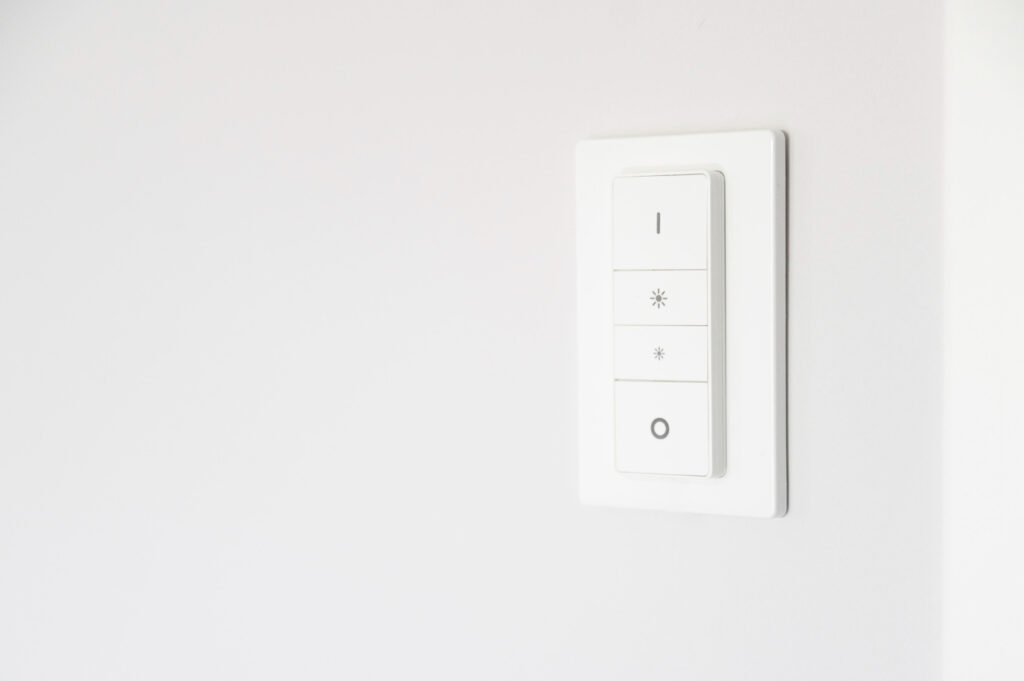Dimmer switches are a popular feature in many Brooklyn Center homes. They offer a simple way to control lighting levels, improve energy efficiency, and enhance atmosphere. Whether you’re watching a movie with the lights low or need bright lighting in the kitchen during meal prep, dimmer switches can make everyday living more convenient. But when these switches start acting up, they can easily become a source of annoyance or even safety concerns.
Most homeowners don’t think much about their dimmer switches until something goes wrong. Maybe the lights start flickering, there’s an odd buzzing sound, or the switch feels warmer than usual. These types of problems don’t just affect performance. They can also point to deeper wiring or compatibility issues. Knowing what signs to watch for and addressing them early on can help prevent future complications and protect your home’s electrical system.
Common Issues With Dimmer Switches
When dimmer switches fail, the symptoms tend to fall into predictable categories. Identifying these signals early helps avoid unnecessary complications later. If you’ve run into dimmer switch problems in your Brooklyn Center home, here are a few things to watch:
– Flickering lights: This is one of the most common signs you might see. If you’ve recently upgraded to LED bulbs and your lights flicker or dim unpredictably, the bulbs might not be compatible with your existing dimmer.
– Buzzing or humming noises: A low buzzing sound coming from the dimmer switch or nearby light fixtures can be a sign of electrical issues. It may indicate overload, poor installation, or an outdated switch working with incompatible lighting.
– Warm or hot switch plates: Dimmer switches can feel slightly warm during regular use, but if the plate feels hot to the touch, there might be a wiring or installation problem. Excessive heat should not be ignored.
For example, a homeowner in Brooklyn Center recently installed LED bulbs in their dining room, only to notice that the lights would flicker everytime they lowered the lighting. Replacing the bulbs made no difference. The actual cause turned out to be an outdated dimmer switch that didn’t support newer LED technology.
While small issues like these may seem minor at first, they often point to earlier-stage problems that can worsen over time and may even become fire hazards if neglected.
Troubleshooting And Fixes
Some dimmer switch concerns are straightforward and can be traced back to simple oversights, while others may be due to aging systems. Troubleshooting the issue helps clarify whether a quick fix is possible or if you need a replacement.
1. Check bulb compatibility
Older dimmer switches are often designed for incandescent or halogen bulbs and may not work correctly with modern LED bulbs. If your lights flicker, do not dim properly, or cut out entirely, check whether the switch and bulbs are labeled as compatible with each other.
2. Look at the installation
Improper wiring or misplacement can cause poor performance and safety risks. If the dimmer hums, the lights respond oddly, or you smell something burnt, you may be dealing with a bad installation. Always turn power off at the breaker before looking at any electrical components, and avoid attempting electrical changes without proper training.
3. Test and replace the switch if needed
Switches can wear down over time or become damaged. If you’ve confirmed that your bulbs are compatible and there are still problems, the dimmer switch might simply be too old or compromised. Replacing it with an updated model may restore proper functionality and prevent future risks.
Many Brooklyn Center homes were built before LED lighting became common. These systems may still be paired with outdated dimmer switches. In those cases, upgrade options not only resolve ongoing flickering but also improve energy performance and electrical safety.
When to Call a Professional
Not all dimmer switch issues are easy to resolve on your own. Some symptoms indicate serious wiring concerns or other underlying electrical hazards and require prompt attention from one of our professionals.
Contact a professional if:
– You replaced the bulbs and lights still flicker.
– The switch feels hot almost immediately or emits a burning odor.
– Buzzing sounds persist, even when the lights are turned off.
– The switch refuses to dim or shut off the lights entirely.
– Lights dim unexpectedly during other electrical usage.
In many Brooklyn Center homes, especially older properties, the wiring behind your switch could be outdated or improperly grounded. Poor connections or high load levels can worsen over time and become larger hazards if not corrected. Our professionals have the tools to properly test circuits, safely replace switches, and bring your setup up to current electrical codes.
Having a technician examine the problem ensures the integrity of your home’s electrical system. While surface symptoms might suggest a simple issue, the real cause can be deeper and harder to detect without the right tools and expertise.
Ensuring Long-Term Functionality
Once your immediate dimmer switch issues are resolved, there are a few simple actions that can help protect and extend its function over the years.
Here are a few long-term maintenance and safety practices:
– Use dimmer switches specifically designed for LED if you rely on LED lighting. Compatibility prevents buzzing, overheating, and bulb damage.
– Do not exceed the switch’s wattage rating. Overloading the circuit reduces its lifespan, affects performance, and increases the chance of failure.
– Keep the switchbox area dry and free of dust. Accumulations can trigger shorts or hinder switch response.
– Inspect switches throughout the home as part of a seasonal check-up. Loose panels or inconsistent dimming may be early signs of wear or other electrical issues.
Consider upgrading to a modern device that supports energy-efficient features, dimming precision, and safety controls. Traditional rotary dimmers often fall short when paired with today’s lighting setups. Rocker or digital models offer better control and smoother operation without the risk of incompatibility.
Every home setup is different, but if a certain dimmer continues to give you problems, stop settling for quick fixes and evaluate whether it’s time for a complete replacement. Homes throughout Brooklyn Center vary widely in age and electrical layout. A switch that works in one home may not function well in another without being properly matched.
Keeping Your Brooklyn Center Home Safe
Dimmer switches help control home lighting, add comfort, and save energy, but when they show signs of failure, they should be examined right away. Blinking lights, hot wall plates, or humming sounds may all indicate something beyond a faulty switch.
The best way to protect your home and ensure functionality is by correcting dimmer issues promptly. Faulty switches can impact more than one room and sometimes lead to circuit-wide strain if left unattended. Replacing or upgrading to a reliable switch with the help of our professionals ensures performance and peace of mind.
If your dimmer switches are no longer working correctly or are causing concern, trust a licensed professional to assess the situation. Proper troubleshooting and installation improve safety, boost reliability, and keep your electrical system running efficiently long-term.
If you’re noticing persistent lighting issues and think it’s time to bring in an experienced electrician in Brooklyn Center, the team at Stafford Home Service Inc is here to help ensure your home’s electrical system is safe and reliable. For a quick estimate or to book a service visit, please contact us today.





